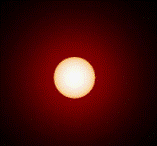Department of Physics and Astronomy: Publications and Other Research

Norman R. Simon Papers
Document Type
Article
Date of this Version
1989
Citation
Bulletin of the American Astronomical Society, Vol. 21 (1989), p.797.
Abstract
The RR Lyrae stars play a role in the investigation of many important astronomical problems. For example, the slope of the luminosity - metallicity relation for RR Lyraes in globular clusters leads to relative cluster ages and thus to a chronology of the formation of the galactic halo. However, it is necessary to know fundamental parameters for the RR Lyrae stars, and these remain controversial. The masses of these objects can be determined in a number of ways, including the use of pulsation theory to model the RRd stars, and the calculation of horizontal branch evolutionary tracks. The RRd stars pulsate simultaneously in the first overtone and fundamental modes, enabling masses to be inferred from the period ratio vs. period diagram. These masses have the range 0.55 < M/Mʘ < 0.65, which disagrees with the masses M/Mʘ ≥ 0.70, determined from recent evolutionary tracks. However, the RRd masses quoted here depend upon pulsation periods obtained from linear models. Since the mass determination requires very high accuracy in the periods, it is necessary to ask whether the linear periods reflect the true theoretical values (i.e., the nonlinear periods) to the precision necessary. To answer this question, we constructed two hydrodynamic models with canonical RRd parameters and integrated them for well over 1000 periods in both the fundamental and overtone modes.


Comments
Copyright 1989 American Astronomical Society. Provided by the NASA Astrophysics Data System